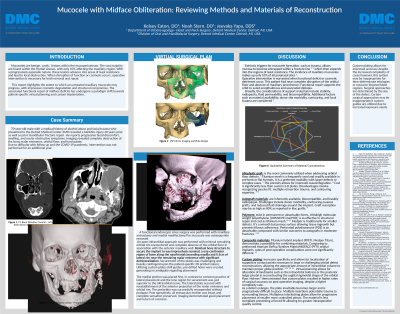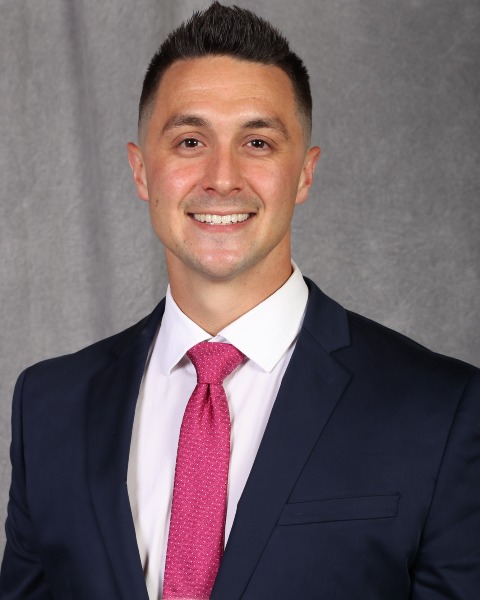Facial Plastic and Reconstructive Surgery
(323) Mucocele with Midface Obliteration: Reviewing Methods and Materials of Reconstruction
Monday, October 2, 2023
2:45 PM - 3:45 PM East Coast USA Time

Has Audio

Kelsey J. Eaton, DO
Resident
Detroit Medical Center
Berkley, Michigan, United States
Presenting Author(s)
Disclosure(s):
Kelsey J. Eaton, DO: No relevant relationships to disclose.
Introduction: Mucoceles are benign, cystic, space-occupying lesions within the mucoperiosteum often involving the paranasal sinuses with only 10% affecting the maxillary region. Progressively expansile in nature, these lesions may lead to significant local destruction. When disruption of function or cosmesis occurs, operative intervention is necessary for both removal and repair. The associated functional repair of midface deficits has undergone a paradigm shift towards patient-specific virtual planning and custom implantation.
Methods:
Case: This patient is a 70-year-old male who presented with a history of facial trauma twenty years prior. He developed increasing facial disfigurement and subsequent visual disturbance. He was found to have a maxillary mucocele resulting in near complete maxillary obliteration with an absence of the orbital floor and maxillary prominence, protrusion through the hard palate, and gross orbital obstruction. This prompted operative resection with both endoscopic and open approaches. Reconstruction was obtained via virtual surgical planning, custom-designed guides, and patient-specific implants.
Results: This case involved near-complete eradication of the maxilla secondary to impressive maxillary mucocele evolution as well as soft tissue distortion. Resultant was a benign hemifacial defect that prompted the utilization of extensive virtual preoperative planning and a custom 3D plating system. This case lends to reviewing mucoceles as a destructive entity, patient-specific plating, and the comparison of differing repair materials and surgical approaches. Materials discussed include but are not limited to: titanium, bone grafts, and ultrahigh molecular weight polyethylene.
Conclusions: Custom plating allows for improved accuracy despite the increased complexity of cases however, this system may be inappropriate for time-determinate etiologies or resource-impoverished regions. Certain surgical approaches may be inappropriate if custom guides are utilized due to increased exposure needs.
